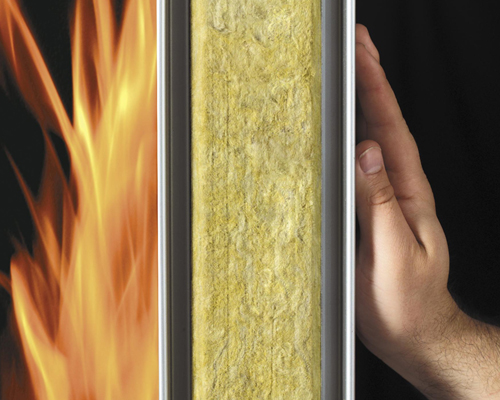
- Homeowners
- Professionals
- Products
- Back
- PlasterBoards
- Metal Framing & Accessories
- Jointing and Finishing
- Gypsum Plasters
- Ceiling Tiles
By material Type
By Category
- Resources
- About
- Careers
- FAQ's

By material Type
By Category
Want a false ceiling in your home? Let us get in touch with you.
We spend 90% of our time indoors. Be it at home, work place, education premise, entertainment area or any similar space, we do spend most our time indoors.
It is thus of utmost importance that the premises we are in, provide us with appropriate safety and comfort other than the services they offer.
Building sciences as a concept. It is the collection of scientific knowledge that focuses on the analysis of the physical phenomena affecting buildings. Building sciences traditionally includes the study of indoor thermal environment, indoor acoustic environment, indoor light environment, indoor air quality, and building resource use, including energy and building material use.
Here is a quick overview of 3 of the most important aspects of Building sciences

is the science and engineering of achieving a good sound environment within a building space. Building acoustics design is achieved by following an “intelligent layout” where noise producing areas are separated from noise sensitive areas. Acoustics design should also ensure sound insulation between rooms and sound absorption of excess sound to improve communication and reduce noise related distraction.
Know More
is the utmost priority in designing any type of building.

It’s a myth that pollution is restricted to the outdoors. The truth is that the indoors can often be more polluted than outside. Thus, it’s necessary to enhance the indoor air quality (IAQ).
Know MoreGyproc India Corporate Office
Saint-Gobain India Pvt Ltd - Gyproc Business,
Leela Business Park, 5th Level,
Opposite Leela Hotel, Andheri-Kurla Road,
Andheri (East), Mumbai - 400059,
Maharashtra, India
Saint-Gobain group
Saint-Gobain India WeberTransform Your House in No Time
What is the one thing that comes to your mind when you see the bare and gloomy wall ceilings of your new house? The need for getting nice wall décor, right? There’s no denying that moving in to a new place invites a lot of stress. But decorating your house the way you want to is as important. It is something that is going to stay for your life time. If you want to give your home a perfect designer ceiling solution, then you have come to the right place. At Saint Gobain Gyproc, we have got you an irresistibly attractive range of wall and surface solutions that will give your ceilings and wall panels an aesthetically new look. Our products and services includes Gypsum ceiling tiles, plasterboards, metal framing system, accessories, drywall & plastering, etc.
So Many Designs to Choose From
If you feel excited to explore our wide range of ceiling designs, we assure you that our customized designs, genuine products, on-time delivery, and other benefits will drive your interest even more. Further, our detailed product descriptions and highly attractive images will help you choose the best for your house. Just go through our site and take a look at the latest designs and trends for your beautiful spaces, which includes living room ceiling design, bedroom ceiling design, kids room ceiling design, and kitchen ceiling design.
Style Your Abode with Gyproc
Gyproc offers the best-in-class false ceiling solutions to add grandeur to your home décor. We allow you to choose from an extensive range of residential false ceiling designs as well as drywall and plastering solutions to give your home or office space a pleasant vibe. The new ceiling design will make your guests be in awe the moment they step in to your house. Through the right planning and artistic ideas, you could renovate your house in a blink of an eye.
You could browse through our product catalogues and select the best false ceiling design that suits your needs. We promise you to get your ceiling designed in just 7 days. All you need to do is to fill a contact form to book a professional visit to your location. We will also help you choose the ceiling design and color based on your budget. So you could, simply relax while we transform your house from ordinary to extraordinary.
Living room
The fifth wall or the ceiling has now become just as integral part of the decor as other spaces of the house. A bare and gloomy ceiling design for hall is something no one would like in their house. Decorating the hall ceiling is very important as that is where all your guests come in. Your living room ceiling gives people the glimpse of how your home might look on the inside as well. Beautiful and aesthetically pleasing false ceiling designs for living room bring a touch of finesse to your home.
If chosen carefully, false ceiling designs can enliven your room and decor manifold. On the other hand if enough attention and thought is not put in when designing your living room ceiling design, the decor and ceiling may look out-of-sync and may not look as good as you would have planned. Ceilings that compliment your surroundings can uplift the beauty of your space as well as create an ambiance of tranquility and peace.
Choosing the right ceiling design for hall takes care of all your problems and matches the aesthetics and decor. A simple false ceiling design for hall is something you can start with if you are not too sure about a false ceiling. Such a ceiling design for hall can match any decor and give you a clean looking fifth wall that matches the theme of the room. False ceiling designs for living room give the room an elegant touch and added finesse whilst hiding chipped paint, hanging wires, lopsided ceilings and other ceiling related issues you face.
The perfect false ceiling design for living room has to be done cleverly and articulately to ensure that it takes care of the multiple things at once. To design a perfect living room ceiling design intricacies and details is something you really need to get into, and intricacies are our forte! Also, while you’re redoing your hall ceiling, enhance the beauty of the other rooms using a designer false ceilings with our exclusive bedroom ceiling designs, kids room false ceiling designs and kitchen ceiling designs.
Bedroom
Settling on the perfect bedroom ceiling design can be tricky. Choosing the perfect bedroom ceiling design can change your bedroom decor completely. While a bedroom false ceiling design can make your room mesmerizing, the wrong bedroom ceiling can ruin it completely. A thoughtful ceiling can add a sense of serenity to your space and alleviate your room manifold. A bedroom false ceiling should have just as much utility as aesthetics. The beauty of a bedroom ceiling design is not just restricted to the ceiling but is affected by the lighting as well, and beautiful lighting is Gyproc’s speciality.
Moving to a new place is stressful, and choosing the perfect decor for each room is the most tricky part. If modern classic is the theme of your bedroom, a geometric design would not look good as your bedroom ceiling. This decision can be tricky when settling on your bedroom ceiling design. What is not tricky is your decision to adorn your bedroom ceiling in a way that matches your imagination and your decor, and no one delivers dream ceilings like Gyproc!
If giving your bedroom the perfect designer false ceiling is what you aim, then it is our job to make it easy for you. At Gyproc, delivering irresistibly beautiful false ceiling design for bedrooms is what we thrive for. Transforming your home in no time, when you choose Gyproc. Enlivening your favourite space in the house can make you fall even more in love with your house. A false ceiling design for bedroom can match any decor that you wish to establish in your bedroom.
We at Gyproc have an attractive range of bedroom ceiling designs which you can visualize using our 360 visualizer and select the look you like the best. Available in a plethora of colours, textures, finishes and designs, a bedroom false ceiling done by Gyporc is the best-in-class ceiling solution and can greatly add to the interiors of your bedroom. A bedroom ceiling design also improves the acoustics of your room and provides insulation where needed. Why stop at re-doing just the bedroom ceiling? Spruce up your living room ceiling design, kids room ceiling design or your kitchen ceiling design with exclusive designer false ceilings by Gyproc
Kids room
Kids have a creative imagination and as a parent, you would always like to give their imagination a boost, so how about a dreamy, imaginative ceiling? Whether you child fancies princesses or race cars, a starry night or meadows, Gyproc offers all kinds of false ceiling designs for kids rooms. So why not use a false ceiling design for kids room as per their liking and give their imagination the boost it requires with a ceiling solution that is as attentive as your child.
A colourful and whimsical kids room false ceiling lets your child wander into their own land of imagination. As studies show, different colours and prints are supposed to help in your child's development and what better way to do it than via beautiful and colorful ceilings. Kids room false ceiling is something that your child looks up to almost all the time, and giving them the most beautiful designs and colors that they like is Gyproc’s job!
Being acoustically efficient, a false ceiling design for kids room helps them study better due to the lack of noise interruptions. A false ceiling is also fire resistant, which is an added layer of safety when it comes to your kids’ room. Leave it up to Gyproc to deliver efficient and elegant false ceiling design for kids room, ensuring the perfect designs that they look up to.
While adding to your kids room ceiling design a 3D effect or a painting, a false ceiling is water and fire resistant and gives an added layer of protection to your kids’ room. Intriguing 3-D patterns blended with beautiful paints is the perfect ceiling for toddlers who live their cartoons and have an interactive ceiling that makes them happy. Such eye-catching kids bedroom false ceilings help make a compelling statement for a child even at an early age when they are growing and learning the most. While you make a land of imagination with quirky kids room ceiling design for your kids, how about a designer false ceiling for yourself as well with our numerous bedroom ceiling design, living rooms ceiling designs or kitchen ceiling designs
Kitchen
Kitchen is the most important space in a house, and is often left bare and unsightly. It is the room that is usually paid less attention to when looking to design a house. What is important to be known is that your kitchen ceiling design has to be in sync with the rest of your home. Just installing a modular kitchen would not make your kitchen look good. A kitchen is much more than a cooking spot, it's where your guests can sit or help when having a party.
A beautiful kitchen false ceiling helps in making a small kitchen get-together. The matching LEDs and a beautifully designed kitchen ceiling design will help your guests feel merrier in a more beautiful environment. A kitchen false ceiling will also help with thermal insulation which will reduce the heating up of the kitchen. Since a kitchen false ceiling design also tends to be fire resistant, it also adds a layer of safety to your kitchen.
It is important that your kitchen decor is in sync with the rest of your home as well as beautiful enough to invite a few friends or family over when hosting a party of a small get-together. The kitchen becomes the perfect spot for such intimate gatherings and a beautiful kitchen ceiling design can give an added charm to such gatherings and we at Gyproc can help achieve that!
A kitchen false ceiling can make your space look good irrespective of the size. Choosing a correct kitchen ceiling design may help even a small kitchen look bigger and spacier. Adding different lights will help a simple kitchen look like a beautiful restaurant without much fuss. False ceilings are extremely functional and have thermal insulation along with fire and water resistant properties, making it the ideal choice for kitchen ceiling design. While you redo your kitchen ceiling design, how about a touch-up to your bedroom ceiling design, living room ceiling design or kids room ceiling design using one of our beautiful designer false ceilings?
We use our own and third party cookies in order to improve your experience and our service. With the aid of cookies we analyze the typical use pattern of visitors to the website. Your continued use of our website shall be conclusively deemed acceptance of the use of cookies. For further information please read our Disclaimer.